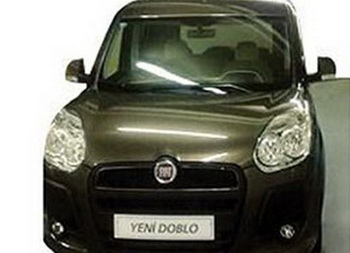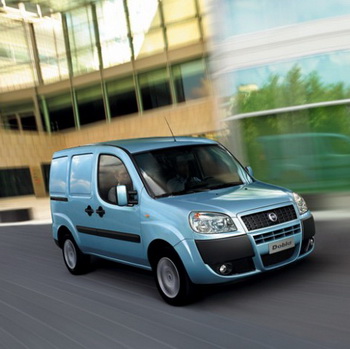 |
|
The all-new Fiat
DoblÚ light commercial van has broken cover, the image shown
in a presentational slide, just as Fiat
prepares to usher in the new model nine
years after the original was launched. |
|
|
|
 |
|
Tofaş, which is a 50-50 partnership between
Fiat Group and Turkish conglomerate KoÁ Holding
and which builds a range of vehicles
including the Fiat Fiorino and
current-generation DoblÚ (above), has this
week reported a 126.6 million lira (US$85 million)
profit for the third quarter of the year, an
eight fold increase on the same period last
year when profit came in at 14.5 million lira. |
|
|
|
The
new Fiat DoblÚ has broken cover again as it
counts down to it arrival on the market, while
Tofaş, the Fiat joint venture company that is
developing and building it, has this week posted
a eight times increase in third quarter profits.
Tofaş, which is a 50-50 partnership between Fiat
Group and Turkish conglomerate KoÁ Holding has
reported a profit of 126.6 million lira (US$85 million)
for the third quarter of this year, which adds
up to an eight fold increase on the same period
last year when profit came in at 14.5 million lira.
Tofaş has been
helped by a comprehensive Turkish government stimulus
package this year that has assisted the vehicle
manufacturing industry as well as other leading consumer
goods producers. That incentive package for the car industry
ended however on September 30. For the July-to-September
third quarter of this year Tofaş has also reported sales
revenues up by 18 percent to 1.299 billion lira and a small
increase in exports.
"The rise in sales is due almost entirely to the
government's tax cuts," Cemal Demirtas, an analyst at Oyak
Securities in Istanbul told the Reuters news agency on Monday after the
results were announced. "There was also a slight increase in
exports." He added that operating profit was 131 million lira, which gave Tofaş a margin of 10.1
percent.
Meanwhile just a
fortnight after leaked photos showed pre-production
prototypes of the all-new Fiat
DoblÚ on the production lines at Bursa, the new generation
light van has broken cover for the second time, this time
taken from a presentational slide, as Fiat prepares to usher
in the new model nine years after the original was launched. Known as Project
263, and built once again by Tofaş, it shows clear family
design language cues in common with the smaller Fiat Fiorino van
that was also developed and built by Tofaş as well as
traditional DoblÚ cues in the form of an enveloping front
bumper.
The outgoing
DoblÚ model was introduced in 2001 based on a well-tested
platform that was derived from the "Project 178 World Car"
Fiat Palio which itself evolved from the Fiat Uno. Developed
by Fiat Centro Stile and built by Tofaş in Turkey, the van
provided a low cost option for consumers and proved to be a
strong seller in markets across the world as well as Europe,
including Brazil where it is also marketed in a beefed up
off-road styled "Adventure" series version. A 5- or 7-seat
passenger carrying version, called the Panorama, has also
been a very popular addition to the range.
In the autumn of
2005 the DoblÚ received a mid lifecycle facelift with a
comprehensively revised front end including new bumper,
grille and headlights, plus minor cosmetic treatment to rear
(including new lights) and interior; and it quickly
collected the prestigious Van of the Year 2006 title.
The first generation DoblÚ was fitted with 1.2-litre petrol
and 1.9-litre diesel (including JTD) engines while for the
facelift the van received a 1.4-litre petrol unit and the
1.3- and 1.9-litre 16v Multijet turbodiesels while there is
also a 1.6 16v "Natural Power" version.
Project 263 has seen an
investment of 370 million euros being made by Tofaş since the project got
underway in October 2007. This project, just like the
recently realised "Minicargo" (Fiat Fiorino/Peugeot Bipper/CitroŽn
Nimo), has been entirely financed by Tofaş, on this occasion through a 10 year
loan which has a built-in 2 year grace period. Tofaş has
also taken the lead in its engineering development, as it
did for the first time with the Minicargo project, with
input for Fiat Centro Stile in Turin. Production is slated
at 120,000 units per year with 70 percent being destined for
European markets.
|